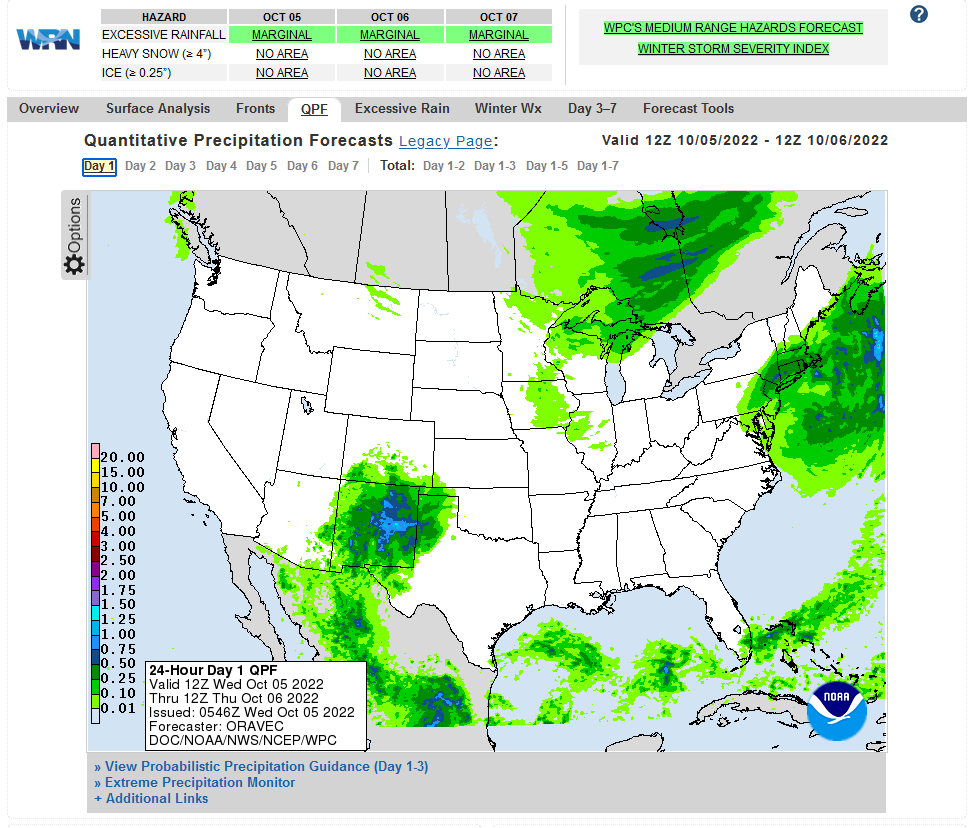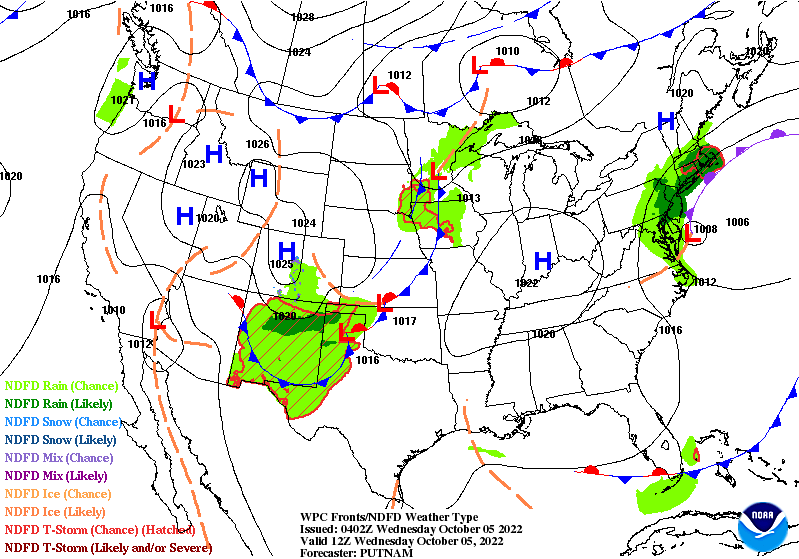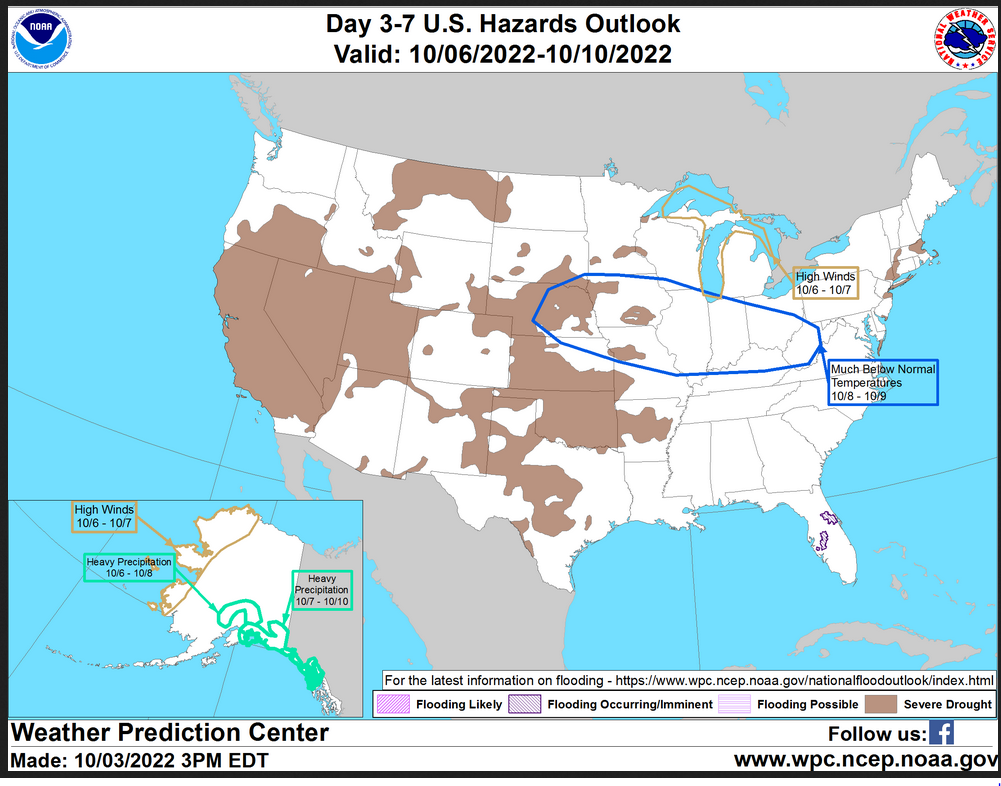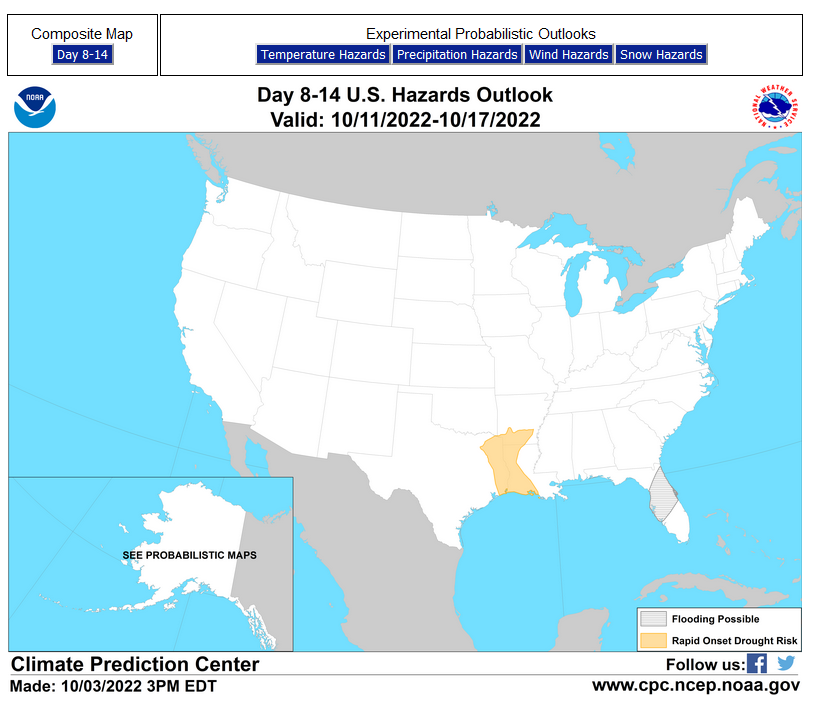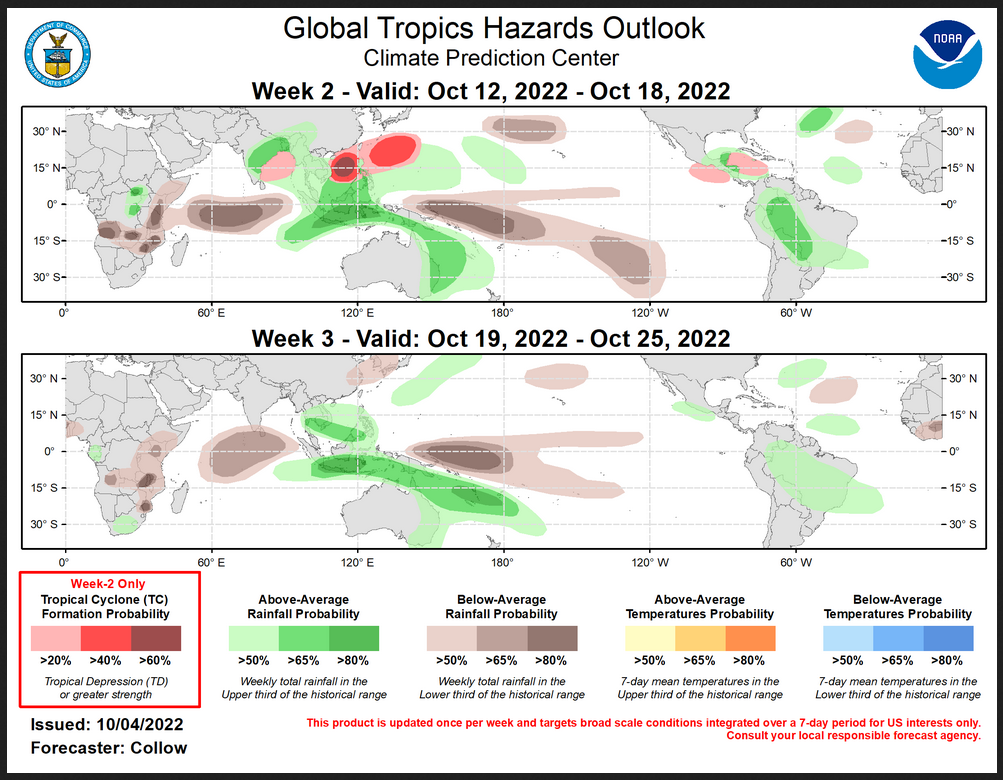Here is what we are paying attention to this evening and the next 48 hours from this afternoon’s NWS Forecast.
...Rainy, breezy, and cool conditions persist from the Mid-Atlantic to southern New England through Wednesday... ...Showers and thunderstorms in the Southwest, with isolated heavy rainfall... ...Above-average temperatures throughout the Plains and Midwest before a strong cold front begins pushing southward late Wednesday... ...Pleasant weather across the Pacific Northwest and California through the end of the week...
Continuation of the NWS Short Range Forecast (It is updated twice a day and these updates can be found here.
An upper-level low, associated with the remnants of Ian, will continue to produce rainfall, strong winds, and coastal flooding in the Mid-Atlantic through Wednesday evening as sustained onshore flow pesters the region. Rainfall totals of 4-8" have already been reported across coastal New Jersey, as waves of moisture have pushed onshore throughout the last several days, with additional totals of 1-2" possible for the Delmarva Peninsula northward into southern New England. Furthermore, temperature departures of 15-25 degrees below-normal will continue through Tuesday, with widespread potential record low maximum temperatures possible today from the Outerbanks of North Carolina to the NYC metropolitan area. Impacts will begin to subside across the Mid-Atlantic as the low slowly moves further offshore late Wednesday and high pressure slides eastward in its wake, with temperatures rebounding into the low to mid-60s tomorrow before climbing closer to average on Friday. Further west, temperatures will remain above-average across much of the Plains and Great Lakes region, with highs today and tomorrow in the low to mid-70s for the Lower Great Lakes, upper 70s to low 80s for the Middle and Lower Mississippi Valley, and upper 80s to 90 degrees for the Southern Plains. However, a potent cold front moving southward from Canada will bring much cooler, fall-like air to the northern Plains on Thursday, with highs dipping into the low to mid-40s across the Dakotas and Upper Great Lakes, before spreading even further south on Friday. Highs will also be above average in the West through Friday, with upper 70s and low 80s for the Pacific Northwest and Great Basin, lower 90s for the central California Valleys, low to mid-70s along the California coast, and mid-90s to near 100 for the Desert Southwest. Moreover, conditions will remain dry during this span, resulting in overall favorable conditions for outdoor activities through at least the end of the week. Elsewhere, a frontal system sagging southeastward across the Southwest and Intermountain West towards a region of anomalous surface moisture will lead to the potential of heavy rainfall in Arizona and New Mexico over the next several days. As a result, a Marginal Risk of Excessive Rainfall has been issued for the region through Thursday, with the potential existing for isolated heavy rainfall rates associated with showers and thunderstorms that can lead to flash flooding at times given the wet antecedent conditions.
Current forecast of heavy precipitation (Updates can be found HERE)
Maps that relate the forecast to geography can be found by clicking Here for Day 1 and Here for Day 2.
Here is a 60-hour animated forecast map that shows how the short-term forecast is expected to play out
If it needs to be updated click here.
HAZARDS OUTLOOKS
Click here for the latest complete Day 3 -7 Hazards forecast which updates only on weekdays. Once a week probably Monday or Tuesday I will update the images. I provided the link for readers to get daily updates on weekdays. Use your own judgment to decide if you need to update these images.
Worldwide Tropical Forecast
(This graphic updates on Tuesdays) If it has not been updated, you can get the update by clicking here This is a new approach and covers weeks 2 and 3 not weeks 1 and 2. It has more information but I am having trouble getting used to it. As usual, it comes with a discussion which is below
Detailed Maps and Reports for the Western Atlantic and the Pacific Oceans
Below are three maps that summarize the situation for the Atlantic, Eastern and Central Pacific. Additional information can be accessed by clicking H ERE
First the Atlantic
Click to view the forecast map and have access to additional information https://www.nhc .noaa.gov/gtwo.php?basin= atlc&fdays=5
Then Eastern Pacific
Click to view the forecast map and have access to additional information https://www.nhc.noaa.gov/gtwo.php?basin=epac&fdays=5
Then Central Pacific
Click to view the forecast map and have access to additional information https://www.nhc.noaa.gov/gtwo.php?basin=cpac&fdays=5
And the Western Pacific
Click to view the forecast map and have access to additional information https://www.metoc.navy.mil/jtwc/jtwc.html
Some Intermediate-Term Outlooks
Links to “Outlook” maps and discussions for three time periods. Days 6 – 10, Days 8 – 14, and Weeks 3 and 4. An outlook differs from a forecast based on how NOAA uses these terms in that an “outlook” presents information from deviation from normal and the likelihood of these deviations.
You have to click on the links because they do not update automatically and I do not want to have stale images in the article. But it is not difficult to click on a link and you get a large image plus a discussion. On Fridays in a separate article, we will show the images and provide a link in this article that article. But remember what you will see is the images as of Friday. But here you can get the current images simply by clicking on them. Then hit the return arrow at the upper left of your screen to return to the article. You will not find this information easily anywhere else.
Right now you can find these maps here (We show them every Friday there but you can click above and find them).
Worldwide Weather
Below is the current or short-term precipitation forecast which can be updated by clicking HERE Additional maps can be obtained HERE.
Month to Date Information
Month to date Temperature can be found at https://hprcc.unl.edu/products/maps/acis/MonthTDeptUS.png
Month to date Precipitation can be found at https://hprcc.unl.edu/products/maps/acis/MonthPNormUS.png

